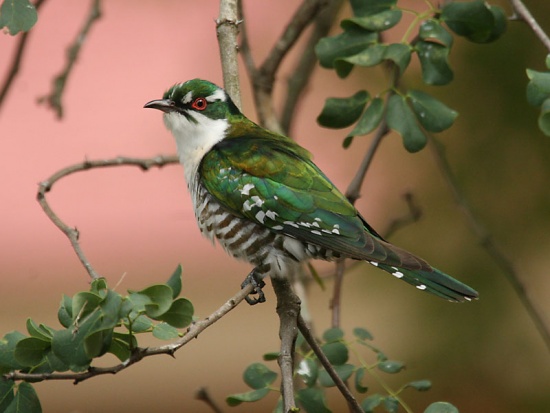Alternative name: Diederik Cuckoo
- Chrysococcyx caprius
Identification
19 cm (7½ in)
A striking metallic greeny-bronze bird with a red eye. Underside is white centrally but barred dark on flanks.
Juveniles and females can occur in a much more reddish plumage.
Distribution
Sub-Saharan Africa and Arabian Peninsula.
Taxonomy
Habitat
It inhabits a wide range of wooded and bushy grassland habitats.
Behaviour
Solitary or in pairs. More conspicuous than other African Cuckoos.
Diet
They forage in the canopy, eating invertebrates, mainly caterpillars; with the addition of seeds and eggs of host birds.
Breeding
A brood parasite; hosts include Red Bishop, Cape Sparrow, Southern Masked-Weaver, Village Weaver, Cape Weaver and Cape Wagtail.
References
- Clements, J. F., T. S. Schulenberg, M. J. Iliff, D. Roberson, T. A. Fredericks, B. L. Sullivan, and C. L. Wood. 2016. The eBird/Clements checklist of birds of the world: v2016, with updates to August 2016. Downloaded from http://www.birds.cornell.edu/clementschecklist/download/
- Avibase
- Handbook of the Birds of the World Alive (retrieved July 2016)
- Birdforum thread discussing the id of this species
Recommended Citation
- BirdForum Opus contributors. (2025) Dideric Cuckoo. In: BirdForum, the forum for wild birds and birding. Retrieved 11 May 2025 from https://www.birdforum.net/opus/Dideric_Cuckoo
External Links
GSearch checked for 2020 platform.1






